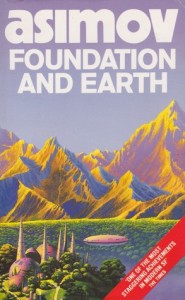 I don’t recommend reading this book until you’ve read the first four Foundation novels, starting with Foundation. You may also want to read all the Robot novels as well. Come to think of it, don’t read this book until you’ve read all those other books first (excepting the prequels) since this is the capstone which ties them all together.
I don’t recommend reading this book until you’ve read the first four Foundation novels, starting with Foundation. You may also want to read all the Robot novels as well. Come to think of it, don’t read this book until you’ve read all those other books first (excepting the prequels) since this is the capstone which ties them all together.
Why am I even sharing it, then? Because Isaac Asimov slipped his own working definition of skepticism into the narrative. In the following passage, Trevize of Terminus along with Bliss of Gaia are querying an academic and native of the planet Comporellon, home to the oldest extant civilization colonized directly from Earth. They are in search of the original home planet itself, which has by this time been lost to history.
“Then the word ‘Earth’ doesn’t bother you at all, does it, Doctor?” said Bliss.
“Not at all, dear lady. I am a Skeptic.”
Trevize said, “I know what the word ‘skeptic’ means in Galactic, but how. do you use the word?”
“Exactly as you do, Councilman. I accept only what I am forced to accept by reasonably reliable evidence, and keep that acceptance tentative pending the arrival of further evidence. That doesn’t make us popular.”
“Why not?” said Trevize.
“We wouldn’t be popular anywhere. Where is the world whose people don’t prefer a comfortable, warm, and well-worn belief, however illogical, to the chilly winds of uncertainty?-Consider how you believe in the Seldon Plan without evidence.”
It is glorious that Asimov distilled the rational art of skepticism down to a single sentence. Even better, his fictional skeptic went straight for the heart of the Foundation mythology, which is actually true in universe but rests on a fairly shaky evidential foundation (pardon the pun) by design.
